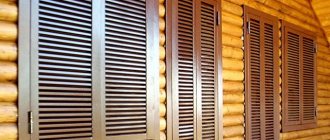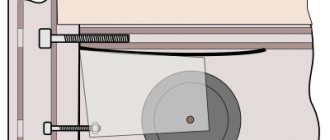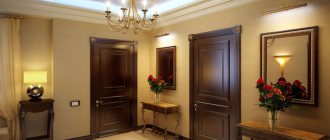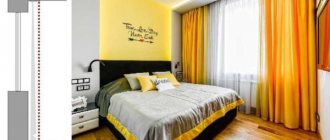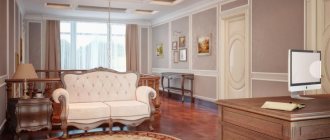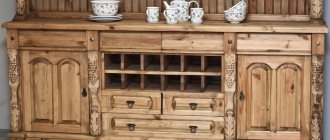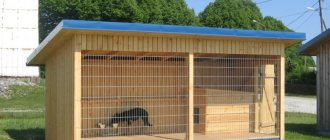Today we will talk to you about what a rack is. This interior item has long ceased to be an exclusively industrial object, although many still associate it with a heavy and bulky metal structure.
Racks come in different shapes, they differ in size, scope of use and material from which they are made. But their main purpose is always the same - organizing space and compact storage of a variety of things.
Definition and functionality
So, to make it easier to understand what a rack is, you need to find out where the name of this design came from. The primary source of this definition can be considered the Dutch word Stellen, which translated into Russian means “to place.” In the interpretation more familiar to our ears, it is modified to the German Stella.
In dry academic language, this device is defined as a structure consisting of a frame assembled from racks and crossbars, on which decking is installed in several tiers. The rack is designed for storing piece items and materials - this is its main function. In everyday life, it can serve not only for its intended purpose, but also as a barrier necessary for fencing certain areas in the room.
Basically, racks are metal structures in which the frame is made of pipes of different thicknesses (depending on the load that will be placed on them) and floors made of boards, particle boards or perforated metal sheets.
Types of racks by area of use
The simplest and most common type of shelving device is considered to be a simple stationary structure with shelf-cells. Their depth, height and width can vary depending on the dimensions of the items stored in them. Modified models are equipped with pull-out shelves and sometimes an automated search system for easy use of filing cabinets and documentation. Do you know what a pallet rack, cantilever rack or stacker is?
The former are equipped with grooves for placing warehouse pallets in them, which greatly simplifies the storage and movement of goods. Console and rack stackers are specialized systems that do not contain stationary flooring; the shelves can be completed independently and adjusted in height using universal hooks-clamps.
Depending on where shelf structures are used, they are divided into:
- archival - devices for narrow-profile purposes, suitable for storing file cabinets and documentation that is rarely requested;
- office - usually these are stationary, easy-to-use racks where business papers and various items are stored;
- exhibition – special structures that are used to create exhibitions and demonstrate production products;
- warehouse – most often these are metal racks, they can be mobile, have different structures and purposes;
- household - fall under a separate category of furniture, which can be used as an interior item in a residential, office or work space.
Due to the fact that the range of equipment needed to optimize warehouse and office space is very diverse, you need to take a balanced approach to its choice.
Main types of racks
Industrial metal shelving
It depends on what items you are going to store on the shelves of the rack. In what room will it be located? How these items will be used depends not only on the size and material from which this type of furniture will need to be made, but also its shape and design. There are racks according to their purpose: office and home.
Office shelving models are designed for storing documents and certain equipment, such as office equipment. They are mainly made of metal or wood (see Rack made of bars: manufacturing options).
Aluminum, stainless steel, simple and valuable wood species are used. They are made entirely of metal or combined with wood.
Since such collapsible metal racks are installed in rooms with high traffic, they must have a presentable appearance, but at the same time be very durable and convenient. So that you can easily and quickly find the document you need.
Prefabricated metal shelf rack
Shelf rack with height adjustment
The photo above shows an exemplary version of the office option, looking at which you can see with your own eyes how aesthetically pleasing a correctly selected collapsible metal shelving looks. When choosing a shelving unit for your office or home, you should pay attention not only to the appearance, but also to the assembly method.
Design features also matter, because they can be mounted either with bolts or on hooks. The stability of the structure and the ability to assemble and disassemble the rack when transporting it to another room depend on this.
Typically, office options are free-standing frames with shelves that, like in a library, can be walked around on all sides. They are often made mobile by installing wheels on them.
Mobile archival metal shelving
Rack made of profile pipes and sheet metal
Archival mobile shelving is made exclusively of metal. Wheels give them mobility. To avoid problems with movement, it is necessary to keep the floors in the room in perfect order. Typically, such racks are designed for long-term storage of books and boxes.
The metal rack is collapsible and can be installed in almost any room. He is not afraid of dampness. It is strong and durable.
There is almost no noticeable difference between office and home types of shelving. It may not look so beautifully finished, but it is no different in terms of strength and spaciousness.
The simplest and most durable models are usually designed for installation in a cellar or garage. It is not always advisable to install such racks in a residential area, but if it is made with high quality and assembled as required by the instructions, that is, without distortions and beams and screws sticking out in all directions, then it is possible.
Prefabricated metal rack for home
The peculiarity of this type of furniture is that it does not consist entirely of metal. The frame itself is usually metal, but the shelves are made of wood or plastic. This design allows you to reduce the weight of the rack without sacrificing strength.
All-metal racks are dismountable, attached to the wall and assembled with bolted joints that can support 200 kg or more - such structures are mainly installed in garages or basements. In stores you can purchase models designed for significantly greater weight, but this only makes sense if they are intended to be used in warehouses. At home, purchasing expensive warehouse racks is not economically profitable.
Prefabricated metal shelving in a home dressing room
Convenient corner rack that can be used not only in the office
Racks intended for home use vary in type of design and material from which they are made. Not only the strength, but also the price of the finished product depends on this.
The simplest racks are made from aluminum or steel profiles or pipes. They are usually covered with a layer of paint. More expensive products are coated with polymer coating and chrome plating. This coating completely protects the metal from rust.
The highest price is for models made entirely of stainless steel. Collapsible metal shelving for the home consists of several shelves, which differ not only in height, but also in width.
For installation in a garage or basement, special, more durable and stable structures are used. The peculiarity of this type of racks is that they must withstand high loads, but at the same time the area of the room for their installation is limited.
In order to use the premises with maximum efficiency, some collapsible metal racks for the home have a characteristic design feature (look at the photo) and are installed exclusively in the corners.
Plastic shelving in greenhouses
Design of prefabricated racks and distribution of load on shelves. A nuance that you need to know about when assembling it yourself
Shelving used in greenhouses and greenhouses must be ergonomic and functional.
Such designs should:
- withstand heavy loads, so they must be durable;
- stable without additional fastenings to the walls;
- easy to use and multifunctional;
- mobile so that, if necessary, you can not only easily move, but also disassemble and assemble.
Advice! When purchasing plastic for greenhouses and greenhouses, pay attention to the information. The instructions must contain information about the safety of the material to use, as well as whether it can be used in the food industry. The requirements for non-dismountable racks are the same as for collapsible ones.
Based on the type of structure, they are divided into several categories:
- Universal. Shelf racks. They are used in archives, offices and warehouses. It can be easily disassembled and assembled, as well as moved to any place.
- Printed. These racks are additionally equipped with plastic boxes. They are placed on shelves. Various items are placed in boxes for long-term storage.
Warehouse and trade racks
There is no particular difference between them, but usually collapsible metal retail racks are small in height, up to one and a half meters, so that customers feel comfortable. Retail shelving is predominantly made to order. They have a visor on the front of each shelf on which price tags for goods are attached.
Warehouse racks can be more than a meter deep and up to the ceiling in height, and items on the top shelf can only be reached using a ladder. Since large, collectively and individually, objects are placed on them, it must be made of high-strength steel, and the load-bearing side and middle columns must have the appropriate thickness to withstand the load.
What are shelving made of?
Once upon a time, wood was the main material for making shelving. However, racks and ceilings made from this raw material were not durable, especially in damp and cold warehouse conditions, so metal replaced wood.
Modern shelving is made from a metal profile, onto which a powder-polymer coating is applied. Such structures are characterized by good resistance to various atmospheric influences, have increased load capacity, are reliable and durable.
The vast majority of household and office shelving, as well as some types of exhibition shelving, are assembled from MDF, durable plastic or natural wood. These can be monolithic structures in which the frame and flooring are a single product. However, there are also modifications where glass shelves are installed. Racks most often do not have a back wall. Also, this type of furniture does not close with doors.
Make your own shelving
You can make such furniture yourself with minimal financial costs.
To make a rack with your own hands, you can use:
- boxes made of plastic or wood;
- old stairs;
- bookshelf;
- perforated metal sheets;
- free niche.
Drawers need to be cleaned, nailed, varnished or painted. You can use a flower arrangement to decorate the rack. If the structure is not bulky, wheels are attached. They make it more interesting and mobile. If you have experience working with wood, you can even make a corner rack for the kitchen for household appliances. The strength of wooden boxes is enough for this.
A couple of old ladders can perform the functions of a shelving unit. It is important that the steps are not too narrow. The stepladders just need to be cleaned and repainted. If you remove the back wall from an old bookcase, you will get an original design for the kitchen. A product made from solid wood or MDF can be artificially aged or updated. This piece of furniture will become the most exclusive in the kitchen.
When using perforated sheets, there are no shelves. The sheets are fixed to the wall, and hooks are attached to them for ladle and bags of seasonings, flowerpots and baskets. This option will decorate the room in high-tech and techno style.
For a niche you need to buy shelves with shelf holders. Ready-made shelves can replace beams. They are even more profitable if you need to store jams, pickles, and household appliances.
Business projects
Entrepreneurs must know what shelving is and what their scope of application is, regardless of the vector of their activity. Where might such equipment be needed?
- In production - for furnishing warehouse premises.
- In sales - at points of sale of goods, not only structures are needed to equip utility rooms and warehouses, but also retail shelving in the halls for visitors.
- At fairs and thematic exhibitions - as showcases for demonstrative samples of goods.
As we have already said, there are also office shelving necessary for organizing and storing documentation, but this furniture will also be useful for decorating premises in catering establishments, schools, kindergartens, medical institutions, etc.
Domesticating industry
In interior design, a shelving unit can be simply an irreplaceable object. This lightweight and versatile design has many incarnations. The rack can be made not only in the traditional form of a high rack with shelves arranged in a strictly geometric order with perfectly straight lines and features, but also have a more modernized appearance. Modern furniture designers offer asymmetrical designs of various heights, widths and depths.
The most popular among buyers are shelving made from MDF panels. This predisposition is explained by the ease of installation, as well as its versatility. Furniture manufacturers produce modular shelving, the arrangement of cells of which is possible in various options, which allows you to modify this piece of furniture depending on the current needs and characteristics of the room.
The structure can be installed in almost any room, it all depends on its size. A small shelving unit will fit into the interior of a hallway or bathroom; a structure that is large in height and width will be an excellent addition to a living room or bedroom.
From chaos to order: how to calculate the number of shelves for an archive
Reading time:
10 minutes
The content of the article:
- Introduction
- Metal rack design
- Step 1: Determine the maximum shelving height
- Step 2: Determine the number of shelves
- Step 3. Determine the length and width of the shelves, as well as the load on them
- Step 4. Draw a diagram of the shelving arrangement
- Step 5. Find out the maximum floor load
- Conclusion
How many shelving units will be needed to organize an archive and what sizes are best to choose? To make it easier for you to answer these questions, we have prepared an article.
In order to speak “the same language,” let’s first understand how the rack is designed.
Metal rack design
The archival warehouse rack consists of vertical racks and horizontal shelves
, for installation of which
a number of holes are provided in the racks with a pitch of 2.5 cm
along the entire height. These holes allow you to adjust the distance between the shelves and their number: you can place shelves closer to each other and then more of them will fit on the rack and vice versa.
The racks are easily connected to each other and form a row of any length
. The main section of the rack consists of 4 racks, and the additional section includes only 2, since the internal racks are not duplicated.
The upper shelf is installed at the level of the first upper hole of the rack, and the lower one at a level no higher than 20 cm from the floor (the 8th hole in the rack) to give the structure greater rigidity.
Archival racks differ from each other in height, number of shelves, their length and width. To choose the best option for your premises, follow 5 simple steps.
Step 1: Determine the maximum shelving height
The higher the rack, the more documents you can place on it, so choose a product that reaches the full height of your archive
. But do not forget to take into account the presence of protruding beams, ventilation or other structures on the ceiling, if any. The Real Steel catalog contains models up to 2.5 meters high to suit all possible room dimensions.
The height of the rack directly affects the number of shelves that you can place on it.
Step 2: Determine the number of shelves
The appropriate number of shelves for your rack is calculated using the formula:
Number of shelves = (Rack height – distance from the floor to the bottom shelf) / distance between shelves.
We already know the value in the numerator, so it remains to determine the value of the denominator.
The distance between the shelves is set depending on the height of the folders or boxes in which the documentation is stored. Thus, a standard box for A4 folders has dimensions of 39x32x27h cm.
To store a box with a height of 27 cm, set the distance between the shelves to 30 cm - a gap of 3 cm is necessary to make it more convenient to get documents if necessary.
Let's say the height of the rack is 2 meters, and the bottom shelf is installed at a distance of 20 cm from the floor. This means that, maintaining an interval of 30 cm, 6 shelves will fit on the rack.
Now we can decide on other characteristics.
Step 3. Determine the length and width of the shelves, as well as the load on them
The width of the shelf also depends on the size of the folders or boxes in which the documentation is stored. For example, for a standard A4 box with dimensions 39x32x27h cm, a minimum shelf depth of 40 cm is suitable. Choose the length of the shelf so that the maximum possible number of boxes can fit in a row on it.
So, for our option, a shelf 120 cm long would be ideal: on it we will place 3 boxes almost side by side.
Knowing the average weight of one box, you can easily determine what load one shelf of the rack should withstand. It is usually enough for the shelf to support 120 kg, but in some cases you may need a higher value.
Now we will move on to the most creative part of solving our problem.
Step 4. Draw a diagram of the shelving arrangement
Draw a schematic plan of the room on paper and arrange the shelves taking into account their sizes and the required distance between them
:
— the main passage between the racks is at least 120 cm; - auxiliary passage between the racks - at least 75 cm; — the distance between the outer wall of the building and the racks parallel to the wall is 75 cm; — the distance between the wall and the end of the rack or cabinet (bypass) is 45 cm.
When assessing the free space for shelving, take into account the locations of windows, doors, radiators, ledges, niches, etc.
Now all that remains is to make sure that the floor in the room can withstand the expected load.
Step 5. Find out the maximum floor load
To prevent the floor in the archive from collapsing at the most unexpected moment, it is better not to skip this point. Count the number of racks in your arrangement plan and multiply by the maximum permissible load on the rack. So, for archival and warehouse racks “Rial Steel” this value is 450 kg. After this, ask the engineer who maintains the building whether the floors can support the weight of the entire number of racks.
If all is well, feel free to place an order in the Real Steel archival shelving catalog or contact our managers. If the load on the floors is too large, then proportionally reduce the number of racks.
Conclusion
In order to correctly calculate the required number of shelves for an archive, you need to know the dimensions and technical features of the room, and also understand in which folders or boxes the documents will be stored. If you want to save time on going through the listed stages, then contact our managers for advice.
To ensure that you receive a response as quickly as possible, please attach a floor plan to your request. Rest assured that we will be able to choose the best solution for you and offer the optimal number of shelving units!
We also suggest reading an article about setting up an accounting office, which will help you properly organize the storage of documents. If you work at a school or other educational institution, then in the future you may find this article about the requirements for student furniture useful.
A reader's paradise
And if in common areas a multi-tiered shelf will serve more as a showcase for a variety of souvenirs and other cute little things, then in a nursery or home office the rack is furniture for a special purpose. In a child’s room it will be an ideal place to store numerous toys and educational literature, notebooks, crafts, and awards. In an office or home library, a bookcase will help you properly organize the space and arrange printed publications according to personal preferences and aesthetic beliefs.


